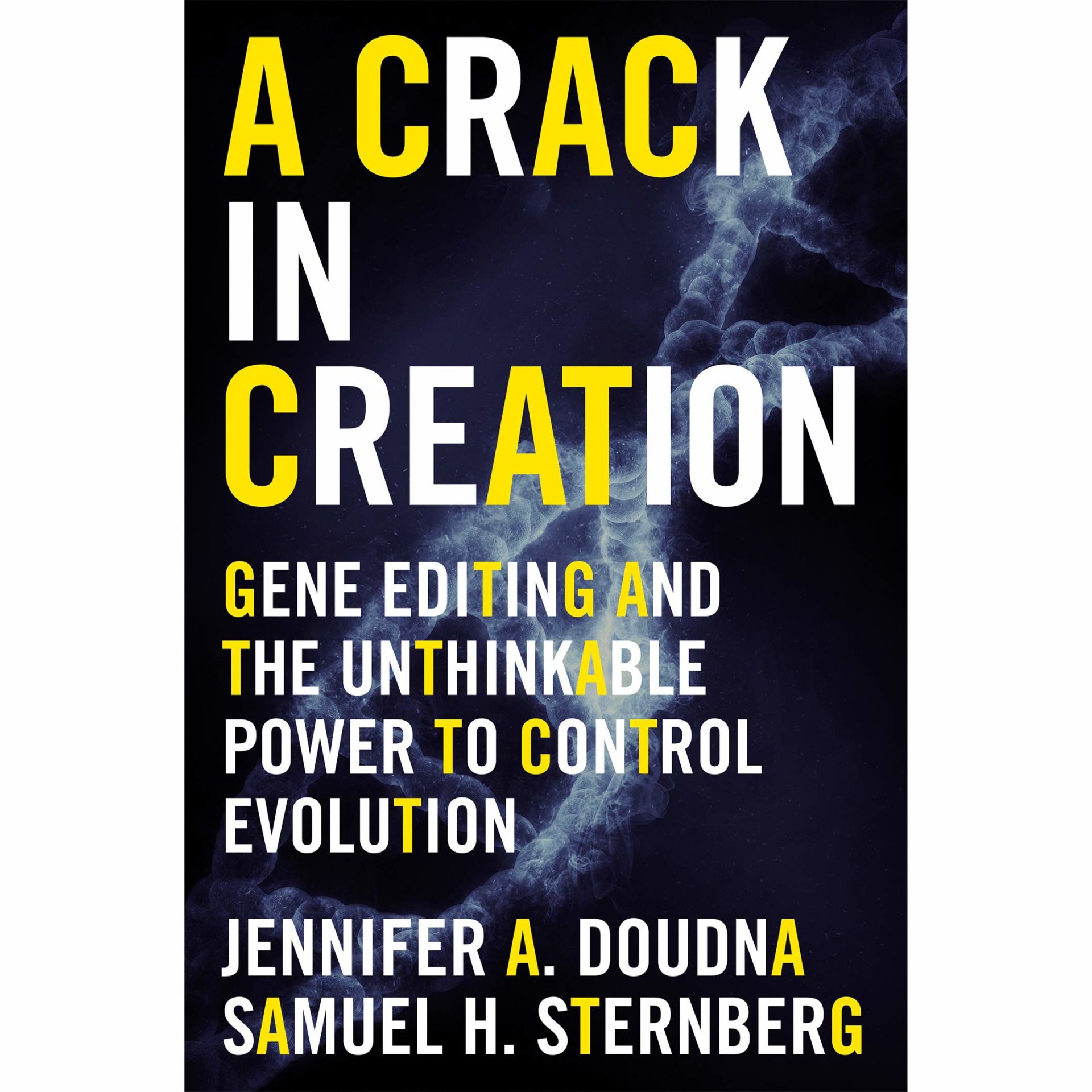
Physiology News Magazine
Book Review
A Crack in Creation: Gene editing and the unthinkable power to control evolution
News and Views
Book Review
A Crack in Creation: Gene editing and the unthinkable power to control evolution
News and Views
Jonathan Ashmore
University College London, London, UK
https://doi.org/10.36866/pn.110.10

You can hardly have missed the rise of CRISPR. It is not shorthand for a new app or for a Chinese dish, but for the gene-editing technology that makes precise, low-cost manipulation of DNA possible. Once a curiosity of bacterial DNA, it has now become a molecular biology tidal wave which many laboratories and companies are riding. Even the financial pages report on a patent rights fight to this potentially very lucrative technology. This fight, between MIT and UC Berkeley, is still running.
CRISPR (Clustered Regularly Interspaced Short Palindromic Repeats) describes sections of bacterial genomes which a bacterium uses to identify and target invading viruses. Although originally identified as a genomic quirk in 1987, it became clear about 10 years ago that this could be a sort of bacterial immune system as the repeating sections store a history, between the repeat sections, of previous viral attacks. These CRISPR regions activate, using the associated RNA, a family of Cas (CRISPR associated proteins) endonucleases which can then slice up the viral DNA. The key discovery, made by Jennifer Doudna and Emmanuelle Charpentier, was that one of these proteins, Cas9, also efficiently cuts eukaryotic DNA once targeted with the appropriate CRISPR-RNA. Once precisely cut, the rest of the cell’s machinery can be hijacked to stitch up the cut strand or to insert a known sequence. And that is what makes it a very powerful technology.
The story of CRISPR-Cas9 technology, what it is, what it might do and how we should think ahead, is the topic of ‘A Crack in Creation’. Even to the uninitiated – I include myself here – this is a gripping primer to the molecular biology. Doudna and Sam Sternberg, a research fellow in her Berkeley laboratory, have written a book with a to-die-for title and cut a wide swathe through a large raft of topics in contemporary science. These include how Doudna found herself running a laboratory studying RNA biochemistry, a slightly folksy account of how she met Charpentier (walking around San Juan in Porto Rico) and how in a brief collaboration this lead to the discovery of the CRISPR-Cas9 mechanism. And how, in an a-ha moment, she realised that this would allow precise genetic engineering of any living organism, bacterium, plant or animal. The separation between the laboratories which initially collaborated so effectively is slightly glossed over and although there are still some unresolved wrinkles (for example ‘off-target’ editing) the power and practical simplicity of the method is undeniable.
The second half of the book is about Doudna’s response to opening Pandora’s Box. Perhaps. Hers is the voice of a rational, liberal scientist who has organised conferences to discuss the ethics of her discovery. She admits to not knowing all the answers. But she spells out what can and maybe should not be done. The issues include that the technology is cheap to implement (just order the appropriate reagents) and that modification of the DNA of germline cells (read: ‘designer babies’) will propagate into the future with unforeseen consequences.
Science has been here before. When homologous recombination was discovered in the 1970s, a moratorium was proposed on such molecular biology engineering. The proposal was not implemented but it gave pause to think about consequences of unfettered technology. Similar issues faced the nuclear scientists – and gave rise to the Pugwash conferences, and may yet do so for the new developments in artificial intelligence and robotics where society’s discussion is not keeping pace with the technology.
Has the horse already bolted before the stable door has closed? To date, PubMed shows over 7000 CRISPR-related publications since the Doudna–Charpentier paper in 2012 with no sign of the growth slowing down. Undoubtedly, there are companies promising correction of familial disease and removal of undesirable traits. A treatment for one form of muscular dystrophy using CRISPR was described by Eric Olsen in our 2017 Annual Prize Lecture. There have already been plant varieties engineered to increase shelf life. In the UK, the use of CRISPR on human eggs has been strongly regulated, but that does not extend everywhere. ‘A Crack in Creation ‘gives one pause for thought. The subheading suggests ‘unthinkable’, but this is precisely why this book should be on every life science graduate’s reading list. For those who have lost the habit of reading books, Jennifer Doudna is the 2018 Croonian Lecturer at the Royal Society in May. It should be worth hearing what she has to say.
